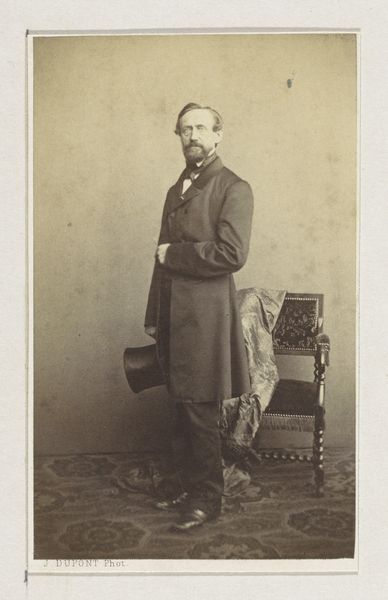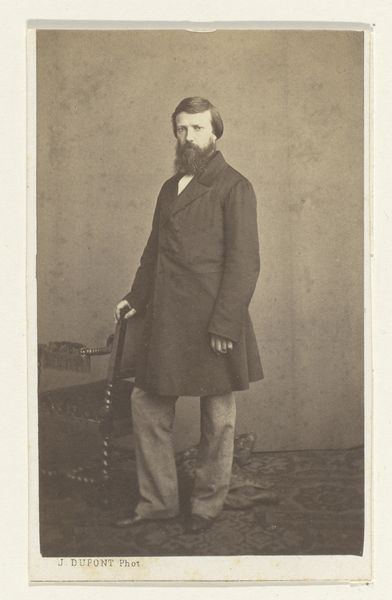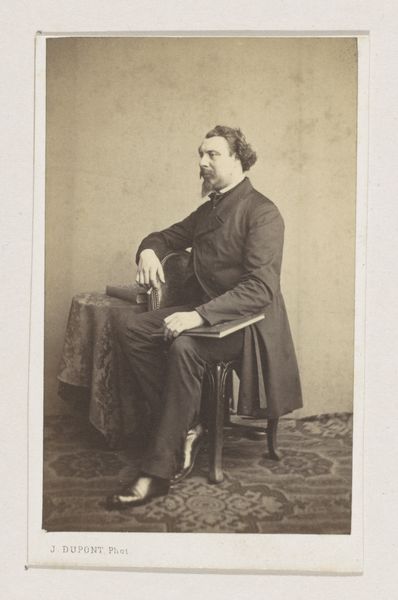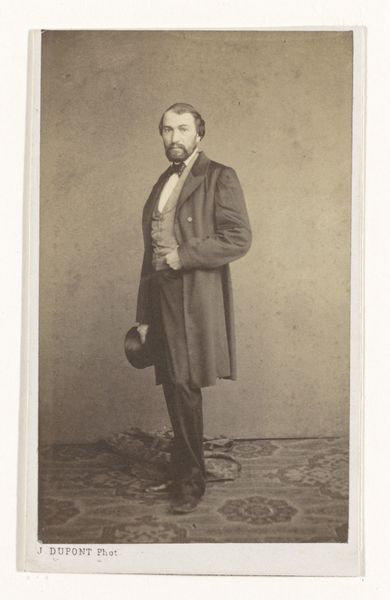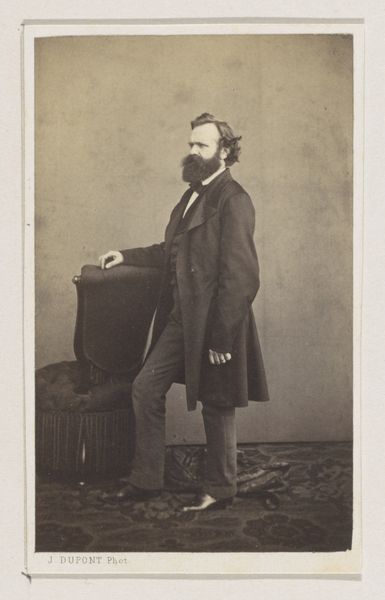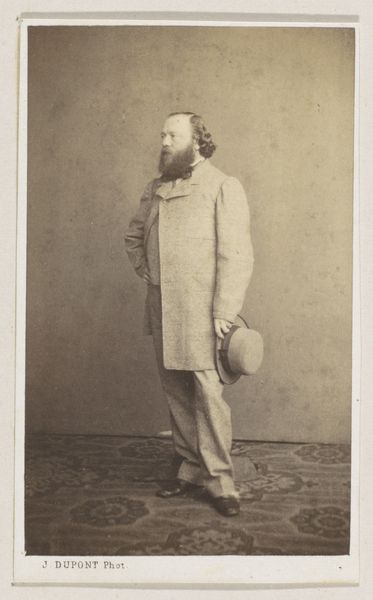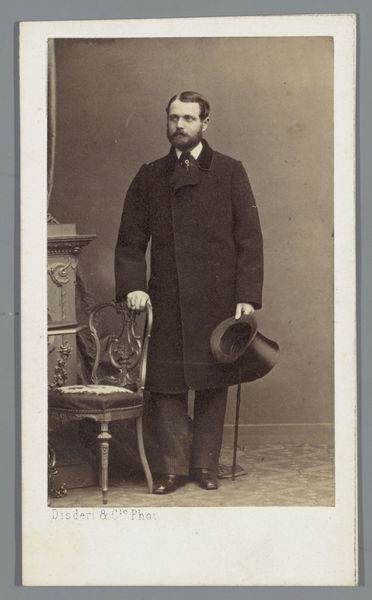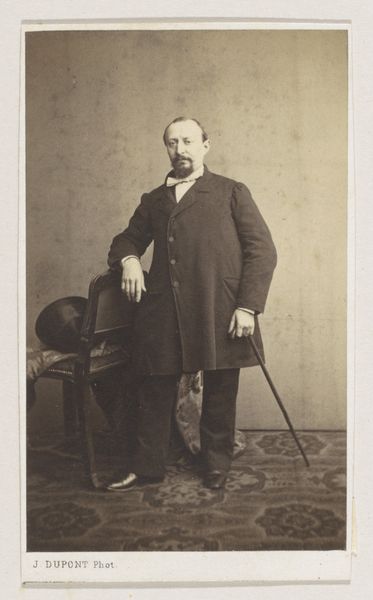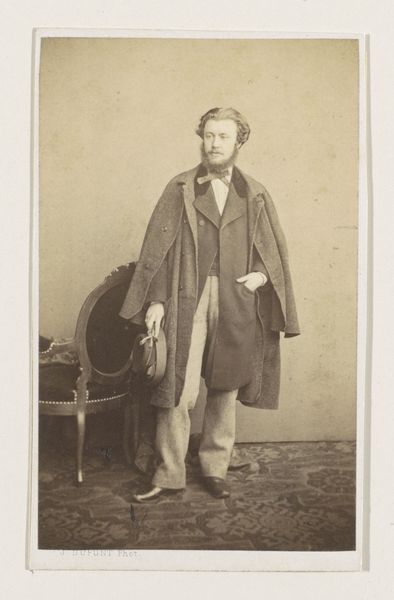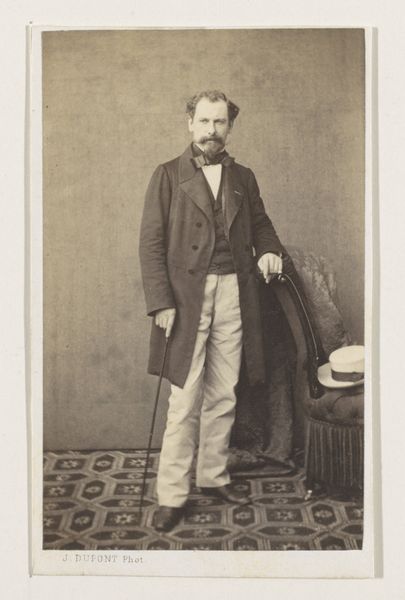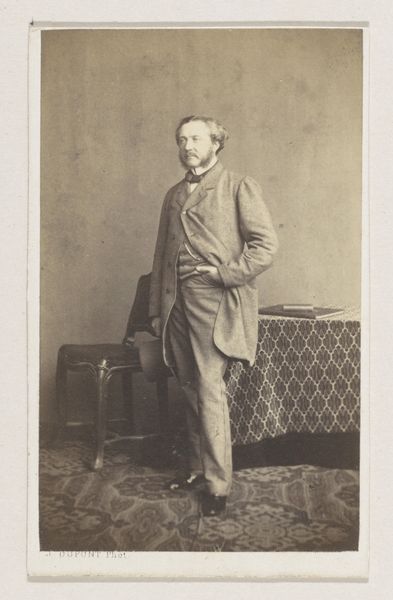
photography, gelatin-silver-print
#
portrait
#
16_19th-century
#
archive photography
#
photography
#
historical photography
#
gelatin-silver-print
#
19th century
#
academic-art
Dimensions: height 101 mm, width 62 mm
Copyright: Rijks Museum: Open Domain
Curator: This is a gelatin silver print entitled "Portret van de schilder Jan Swerts, ten voeten uit" – Portrait of the Painter Jan Swerts, full length – created in 1861 by Joseph Dupont. Editor: There’s something instantly dignified and resolute in this portrait. The figure, set against a muted background, appears almost sculptural due to the deliberate light and shadow play. Curator: Precisely. The monochromatic palette emphasizes form and texture, focusing attention on the subject's stance, attire, and expression. Notice how the tailoring and folds of his coat convey volume while remaining realistically detailed. Dupont's command of light is clear in defining depth here. Editor: The gaze directed just off center, the hand resting upon his hat, signal not merely portraiture, but an assertion of status. It's the posture of a confident man—perhaps even self-aware of how history might remember him. But consider also the socio-political forces: The Industrial Revolution, burgeoning nationalism – how might these tensions be reflected within a carefully constructed representation of artistic identity? Curator: An interesting conjecture. However, without venturing too far into social theory, the photograph itself can be appreciated as a study in classical compositional principles. Dupont arranges shapes, balances light, and explores materiality within the frame, independently creating symbolic expression. Editor: Fair enough, yet can one wholly disregard that this image comes out of, is indeed intrinsically tied to, 19th-century Belgian art circles? Surely the photograph itself functions as documentation—an intervention even—within that landscape. Understanding the broader narrative allows appreciation beyond simple formal arrangement. The carpet in the photo, although unassuming, adds a textural element to this discussion as well, doesn't it? It signifies status, prosperity, and class in 1861. Curator: Of course, context adds richness; though let us appreciate first the sophisticated control over tonal range that creates form itself before integrating extra factors! Editor: Point taken. Dupont, through his chosen medium, delivers insight both artistically and culturally here. Curator: And ultimately creates an aesthetically resolved work of lasting value.
Comments
No comments
Be the first to comment and join the conversation on the ultimate creative platform.
